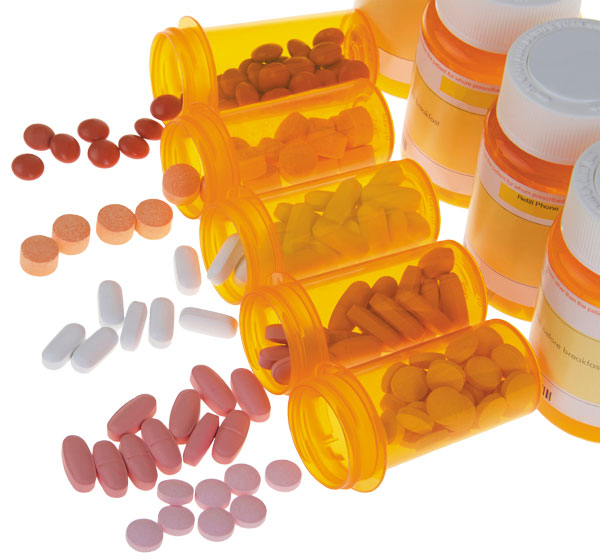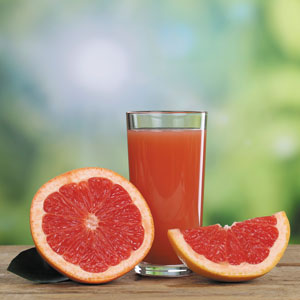7 things you can do to avoid drug interactions
Each of your medications may be affecting how the others work, leading to harmful side effects and complications.

Each additional medication you take increases the risk of drug interactions.
Are you taking more than one drug? Are you taking a few different types of medications? Are you seeing several different doctors? If so, you may be at increased risk for drug interactions, which occur when a drug, a supplement, or even a food affects the way your body processes a medication. Such interactions can make a drug more powerful—so that a standard dose becomes an overdose—or can render it less potent or altogether ineffective.
"It's critical that people learn about their medications and become aware of their response to them," says Dr. Shobha Phansalkar, assistant professor of medicine at Harvard Medical School. Her research centers on exploring ways people can better manage their medications to avoid side effects.
How drug interactions happen
The term "drug interactions" is somewhat misleading. Drugs don't combine in the body to produce chemical reactions. Instead, a drug, supplement, or food may affect how long a medication stays in the body, often by stimulating or inhibiting the production of specific enzymes in the liver or intestine. These enzymes are part of the cytochrome p450 system, which plays an important role in metabolizing many medications. Drugs interactions usually occur in one of the following ways:Interactions with other drugs. Interactions between two drugs occur when one drug affects the cytochrome enzyme that process the other. For example, the antibiotic metronidazole (Flagyl) inhibits the enzyme CYP2C, which breaks down warfarin (Coumadin). If the two medications are taken together, the blood thinner canlinger in the body, increasing the risk of severe bleeding. The anti-seizure drug phenytoin (Dilantin) stimulates excess production of CYP3A4, the enzyme that metabolizes estradiol, a component of low-dose contraceptives. In this case, the contraceptives are cleared more rapidly in women taking phenytoin, reducing their effectiveness and increasing the chance of an unplanned pregnancy.
In other instances, two drugs taken for different purposes may have the same effect, producing something like an overdose. A common example of this is when over-the-counter pain relievers—aspirin, ibuprofen (Motrin), naproxen (Aleve), and to a lesser extent, acetaminophen (Tylenol)—are taken with blood thinners like warfarin and clopidogrel (Plavix). Since the pain relievers also have anti-clotting effects, the combination can result in severe bleeding.
Interactions with nutrients. Several foods can also block or stimulate the enzymes that break down drugs. People who wash down atorvastatin (Lipitor) or simvastatin (Zocor) with large amounts of grapefruit juice may experience muscle pain and other side effects from statin "overdose," because the juice inhibits the enzyme that clears the statins. Fish oil supplements can have a similar effect when taken with warfarin, increasing the risk of severe bleeding. Iron supplements can diminish the effects of levoxythyroxine (Synthroid), the medication used to treat an underactive thyroid.
Interactions with your body. Your body itself may react to drugs in unexpected ways. There is more than one version of each of the 50 or so CYP450 enzymes, and there is no easy or reliable way to identify which ones you have inherited. You may have reactions to certain drugs because you break them down faster or slower than most people do. Also, as we age, we tend to metabolize drugs more slowly, so that a dose lower than the one usually recommended may be sufficient. Kidney or liver disease can also slow the rate at which drugs are metabolized. For those reasons, it's important to carefully monitor your reaction to any new drug you take.
Minimizing the risk of interactions
Dr. Phansalkar acknowledges that it isn't realistic to expect us to memorize every possible interaction for every medication we take. But the following can go a long way in reducing problems:1. Know why you are taking each medication
Drug names are often hard to pronounce, difficult to remember, and easy to mix up. An error when you list your drugs could mean a potential interaction will go unnoticed. For example, Klonopin (the brand name of clonazepam, used to treat panic attacks) may be mistaken for clonidine, a common blood pressure medication. However, if you tell a pharmacist or health care professional that you're taking Klonopin to bring down your blood pressure, he or she is likely to realize that you're actually taking clonidine. Consider labeling each pill bottle or package with the reason you're taking the drug—for example, "blood pressure."2. Know how to take the drug
It's important to learn whether to take your medication with food or on an empty stomach. For example, taking a bisphosphonate (a class of drugs used to arrest bone loss) with milk, coffee, or juice or eating anything within 30 minutes of taking the medication will negate its effects. On the other hand, some drugs are better taken with food, either to aid their absorption or to prevent them from irritating the stomach lining. And some drugs are not to be taken with specific foods. For example, the antibiotic tetracycline shouldn't be taken with dairy products because calcium interferes with the drug's absorption.3. Fill all your prescriptions at the same pharmacy
The health care system is still fragmented. Your primary care team is likely to have a record of the prescriptions you've gotten from that office, as are the specialists you have seen. However, each isn't likely to know what the others have prescribed. Although pharmacies store records of all prescriptions they fill, one pharmacy may not have access to the records of another and so may not have a complete record of your medications. Keeping an updated list of your medications would be very helpful, especially in emergency situations.4. Be suspicious of supplements
Some of the most serious drug interactions involve prescription medications and supplements. Not only are supplements less likely than FDA-approved medications to be listed in the databases of drug interactions, but health care providers also may not know what supplements people are taking. Since there isn't much evidence that supplements have health benefits, it's best to avoid them unless your doctor prescribes them.
5. Go easy on grapefruit juice
While it's true that grapefruit juice affects the metabolism of several drugs, it usually takes about a quart of the juice to make a difference. If you love the juice, ask your pharmacist if any of the drugs you take are affected by it. If they are, you should still be able to enjoy half a grapefruit or an 8-ounce glass of juice daily as long as you wait a few hours after taking the medication.6. Limit alcohol
It isn't a good idea for women to have more than a drink a day in general, and it can be even worse to drink while you're taking drugs. Alcohol increases drowsiness—an intended effect of sleeping pills and a side effect of many antihistamines, antidepressants, and anti-anxiety medications. It can also irritate the lining of the esophagus and stomach—a special concern if you're taking aspirin, other nonsteroidal anti-inflammatory drugs, or an oral bisphosphonate for low bone density.7. Talk to your pharmacist
When you pick up a prescription, you may find as many as three different sheets or leaflets with your medication, each detailing the conditions the drug is approved to treat, how to take the drug, and the drug's possible side effects. If your first reaction is "too much information!" your next step should be to ask the pharmacist to summarize how to take the drug and what to expect.Your pharmacist may also be willing to talk to your health care team about adjusting a medication dose or finding an alternative that will work better. Some health plans have medication therapy management (MTM), or programs that allow an annual in-depth consultation with a pharmacist. Check yours to see if you qualify for MTM services.

No comments:
Post a Comment